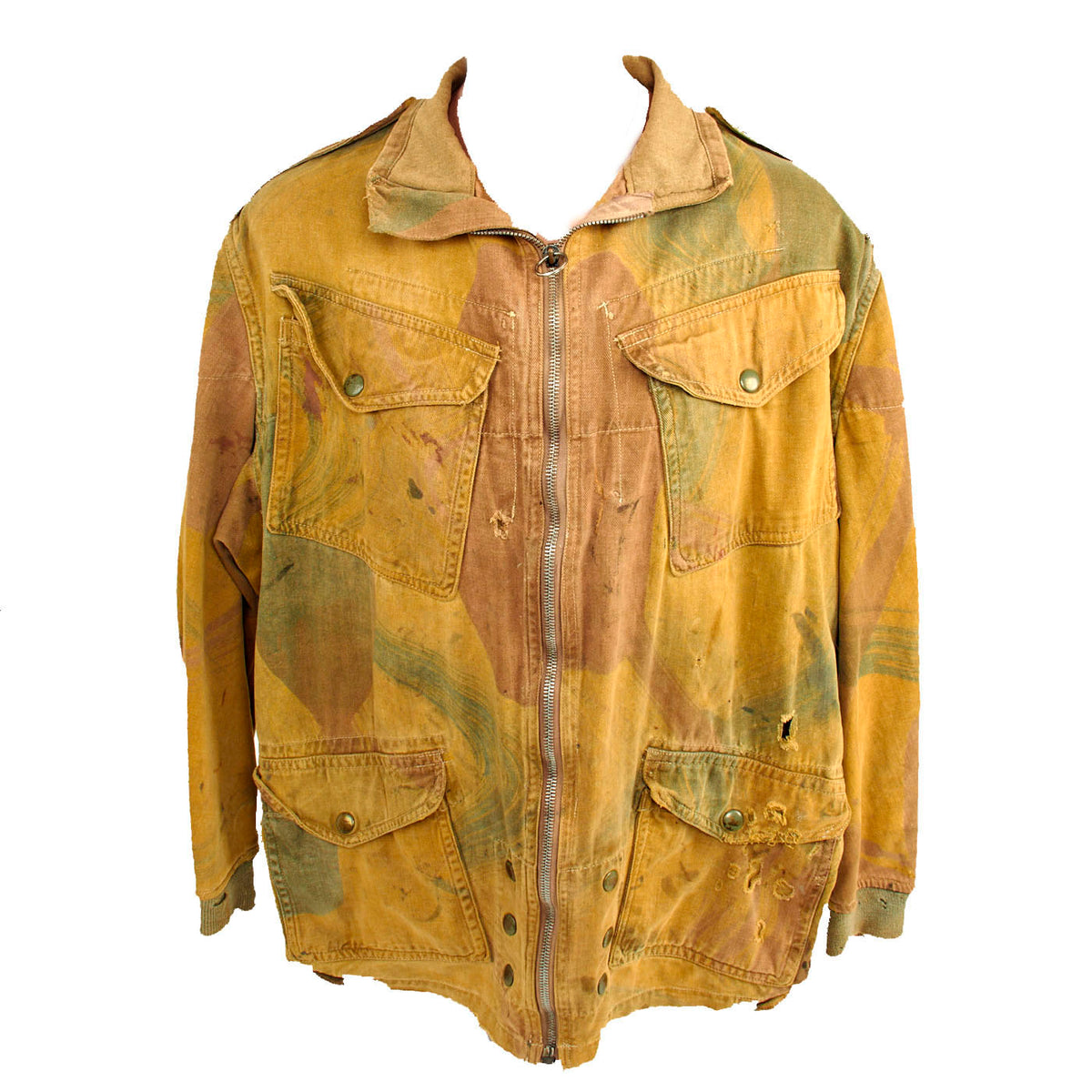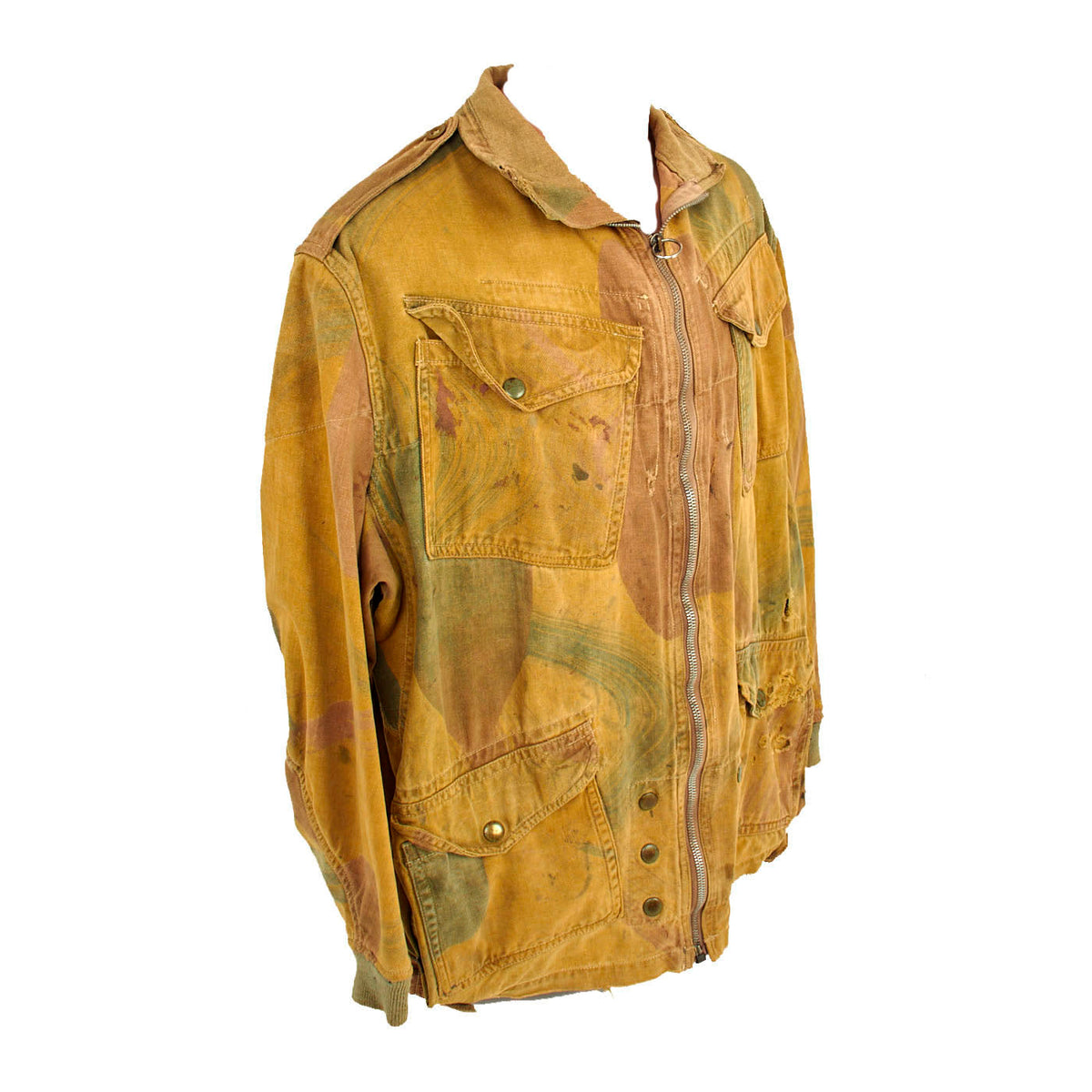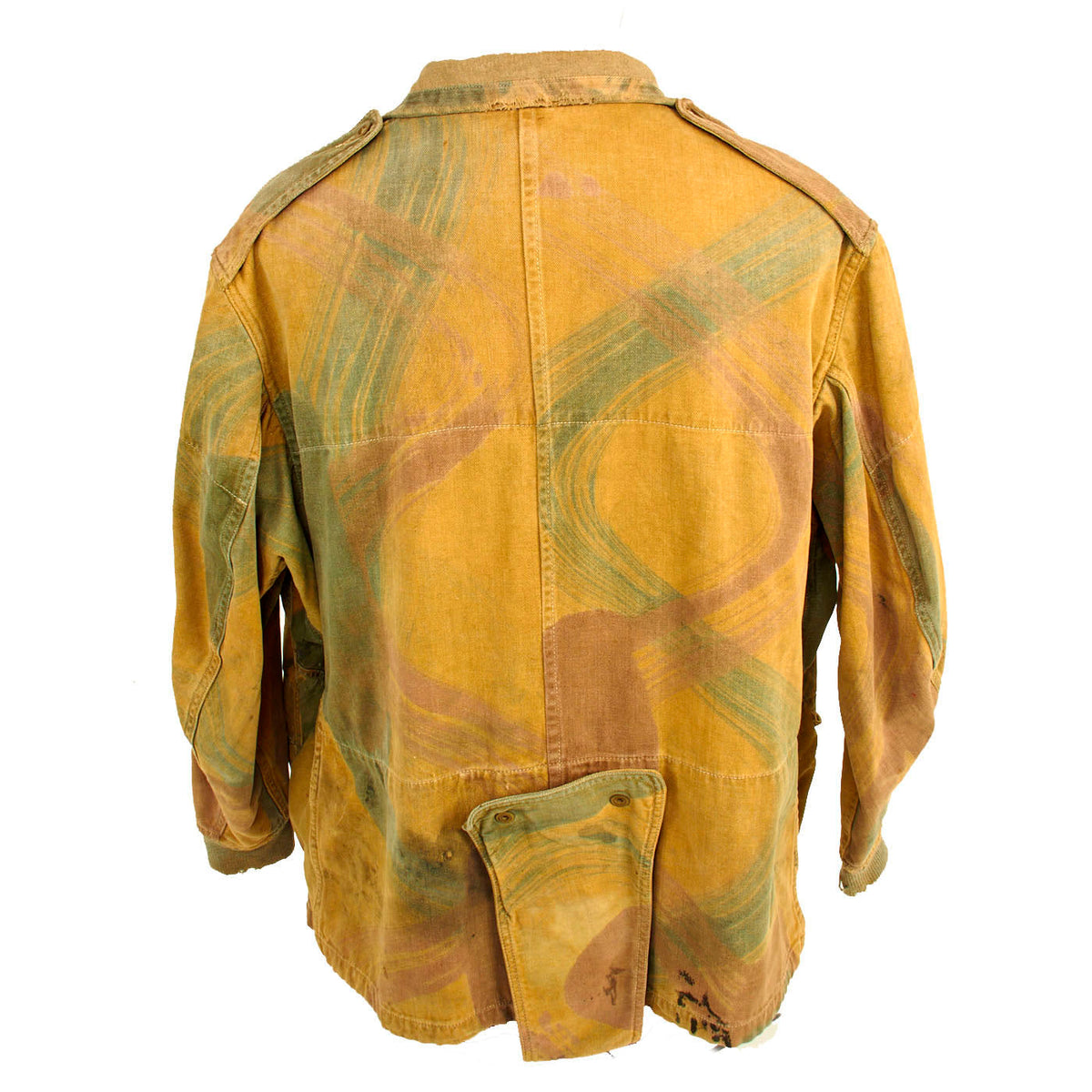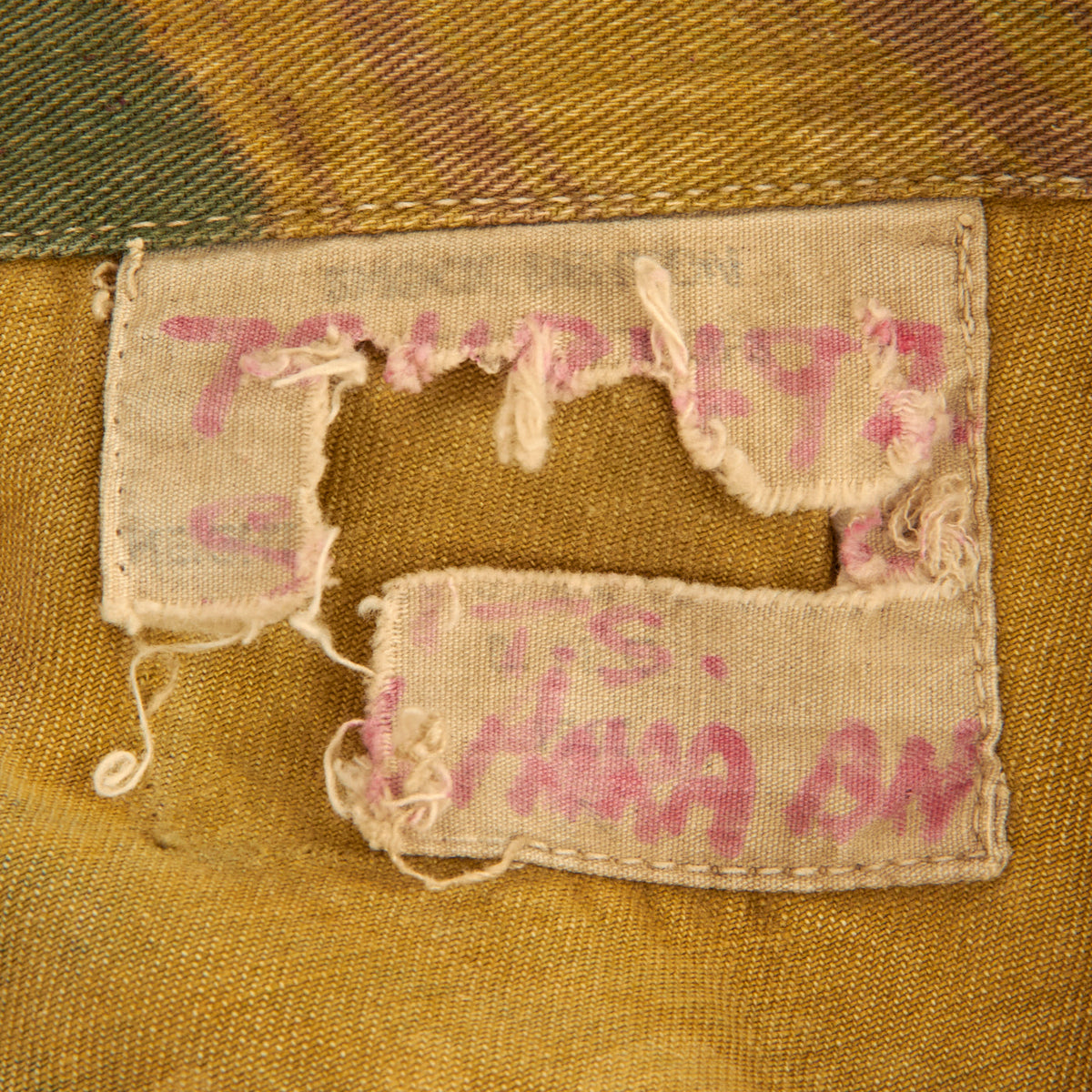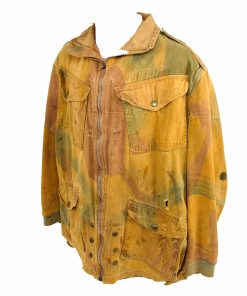Original British Unit Marked Parachute Regiment 1959 Pattern Denison Smock – 6th (Royal Welch) Parachute Battalion Original Items
$ 995,00 $ 248,75
Original Item: Only One Available. This is a fantastic example of a genuine 1959 Pattern Denison Smock, dating from 1961-1962 manufactured by BMC (only manufacturer of 59 patterns up until 1963). This example is offered in excellent, field used condition. It features brass buttons and a “monkey tail”. Size appears to be a No. 4 which is medium/large and fits up to a 5′ 8″ man.
The service number is too difficult to make out properly as is the name, but the unit appears to be labeled as “6 Para Bn”, which would be for the 6th (Royal Welch) Parachute Battalion.
A lovely example ready for further research and display.
Approximate Measurements:
Collar to shoulder: 11.5″
Shoulder to sleeve: 24”
Shoulder to shoulder: 21.5”
Chest width: 29”
Waist width: 27″
Hip width: 27”
Front length: 31
The 6th (Royal Welch) Parachute Battalion was an airborne infantry battalion of the Parachute Regiment raised by the British Army during the Second World War.
The battalion was created in 1942 by the conversion of the 10th (Merionethshire and Montgomeryshire) Battalion, Royal Welch Fusiliers to parachute duties. It was then assigned to the 2nd Parachute Brigade, at that time serving in the 1st Airborne Division in England.
The battalion’s first combat action was in 1943, when it participated in an amphibious landing, Operation Slapstick, at the port of Taranto in Italy. When the 1st Airborne Division left Italy, the battalion, still with the 2nd Parachute Brigade, remained behind, where it took part in the Battle of Monte Cassino.
The battalion’s first combat parachute jump was during Operation Dragoon, the Allied invasion of the south of France. Soon after the invasion, the battalion returned to Italy and took part in a second combat parachute jump, Operation Manna in Greece.
After the Second World War the battalion became part of the 6th Airborne Division and served in Palestine. Post war reductions in the British Armed Forces resulted in the battalion being amalgamated with the 4th Parachute Battalion in 1947.
Fast Shipping with Professional Packaging
Thanks to our longstanding association with UPS FedEx DHL, and other major international carriers, we are able to provide a range of shipping options. Our warehouse staff is expertly trained and will wrap your products according to our exact and precise specifications. Prior to shipping, your goods will be thoroughly examined and securely secured. We ship to thousands clients each day across multiple countries. This shows how we're dedicated to be the largest retailer on the internet. Warehouses and distribution centres can be located throughout Europe as well as the USA.
Note: Orders with more than one item will be assigned a processing date depending on the item.
Before shipping before shipping, we'll conduct a thorough inspection of the items you have ordered. Today, the majority of orders will be delivered within 48 hours. The delivery time will be between 3-7 days.
Returns
The stock is dynamic and we cannot completely manage it because multiple stakeholders are involved, including our factory and warehouse. So the actual stock may alter at any time. It's possible that you may not receive your order once the order has been made.
Our policy is valid for a period of 30 days. If you don't receive the product within 30 days, we are not able to issue a refund or an exchange.
You can only return an item if it is unused and in the same state as the day you received it. You must have the item in its original packaging.
Related products
Uncategorized
Uncategorized
Uncategorized
Uncategorized
Uncategorized
Uncategorized
Uncategorized
Uncategorized
Uncategorized
Uncategorized
Uncategorized
Band of Brothers ORIGINAL GERMAN WWII Le. F.H. 18 10.5cm ARTILLERY PIECE Original Items
Uncategorized
Uncategorized
Uncategorized
Angolan Rebel 1970s era 60mm Inert Display Mortar from Angolan Civil War Original Items
Uncategorized
Uncategorized

